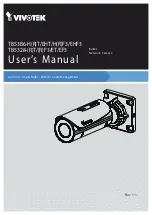
Cheetah Python Cameras User Manual | CoaXPress (CXP) Interface
August 27, 2019
Page
73
of
86
Rev 1.0
When DPM is enabled, the camera compares each pixel’s coordinates with entries in the
DPM. If a match is found, the camera corrects the defective pixel. The same methodology
is used to correct hot pixels.
You can create your own Defective Pixel Map (DPM) and Hot Pixel Map (HPM) files (see
Creating DPC / HPC Tables) and upload them using the Imperx Upload Utility
application.
Dynamic Pixel Correction
Dynamic pixel correction provides another method of correcting defective and hot pixels.
Dynamic correction works without preloaded pixel maps. Instead, you set a dynamic
threshold value between zero and 4096 (12-bit) counts. The threshold determines how
much a pixel’s luminance can deviate from neighboring pixels. If the deviation between
bright or dark is too great, the camera corrects the pixel.
Dynamic and Static corrections can be enabled independently or simultaneously.
Dynamic pixel correction is available only in C5180, C4181, and C4180 models.
Flat Field and Noise Correction
The C5180, C4181, and C4180 cameras use a factory installed flat field correction (located
in FFC1) algorithm to correct some of the image sensor’s non-uniformity and employs an
algorithm to correct the fixed pattern noise (FPN) within the image sensor. You can upload
your own FFC table to FFC2. While not recommended, you can disable both the FFC1 and
FPN corrections. If two FFC correction tables are needed, you can also overwrite the factory
installed FFC located in FFC1.
In the C5190, C4191, C4190 cameras, high Pixel Clock frequencies lead to the additional
fixed pattern noise (FPN). The camera employs FFC Sequencer feature to correct FPN. As
the FPN varies for the different Pixel Clock frequencies, FFC Sequencer applies either FFC1
or FFC2 tables (both are factory installed) for the correction (refer to the
Sequencer section).
The FFC Sequencer switches FFC tables based on the difference between the Pixel Clock
and Pixel Clock Threshold values. If Pixel Clock is greater than Pixel Clock Threshold, FFC
Sequencer applies FFC1 table for the correction. Otherwise, FFC2 table is applied.
While not recommended, you can change Pixel Clock Threshold and create your own FFC
tables to use with this threshold.
In C5180, C4181, and C4180 cameras, there is no additional FPN and FFC Sequencer is not
required.














































